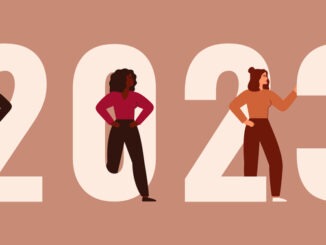
With more organisations embracing diversity, equity and inclusion (DEI) efforts, it should come as no surprise that unconscious bias has reared its ugly head – how can you stop it from taking hold in your workplace?
CREDIT: This is an edited version of an article that originally appeared on Forbes
Inherent in working cultures, unconscious bias (also known as implicit bias) refers to subconscious attitudes that impact how people respond to others at work.
While some implicit biases are directly related to age or gender, others result in judging people based on height, weight or even how attractive someone is perceived to be. This can impact influence retention, engagement, productivity, brand reputation and ultimately, the bottom line.
Because unconscious bias stems from stereotypes that people are unaware of, it can be difficult but not impossible to detect.
Here are some of the most common forms of implicit bias and ways to address them in the workplace.
Affinity bias
Also called similarity bias, this type of bias causes people to be attracted to others who appear to be like them. These similarities could include backgrounds, interests and appearance.
For example, if you interview someone who happened to go to the same university, you may automatically feel they are a good fit for the team.
To combat affinity bias, stop and ask yourself why you may be drawn to specific people at work. Also, encourage feedback and try to find common ground with all your colleagues—even those with whom you disagree.
Appearance bias
This type of unconscious bias involves judging someone based on how they look. The physical attributes used to treat people differently include hair colour, weight, height and even perceived beauty.
The good news is that this bias is easier than others to address. A simple example is eliminating photographs or appearance data from the hiring process.
In addition, a structured screening process that evaluates candidates before in-person interviews helps avoid appearance bias.
By first screening candidates by phone rather than video, you can select the most capable individuals without unnecessary bias impacting the process.
Confirmation bias
Confirmation bias is the tendency to seek out and interpret new information in a way that confirms your own views. It affects our ability to think objectively, leading to bad decision-making.
For example, let’s say you are conducting market research for a new product at work—what you anticipate being the next “big thing.” Although you gather information supporting that it isn’t something consumers want, you classify those data points as outliers to reinforce your original hypothesis.
To avoid this unconscious bias, follow the data when making decisions. For example, in hiring, try not to form initial opinions about candidates based on their names or where they went to school. Instead, ask standardised skills-based questions that provide everyone a fair chance.
Gender bias
Gender bias is a form of unconscious bias where one gender is preferred over another. It most often refers to the favoured treatment men receive in the workplace.
According to the most recent Women in the Workplace study, only 25% of C-suite executives are women. For every 100 men promoted from entry level to manager, only 87 women are promoted.
One of the most effective ways to deal with gender bias is to train your employees to identify and challenge it directly.
You can also avoid it through gender-neutral hiring practices. By implementing blind evaluation techniques such as skills tests and work samples, diversifying your workforce will be much easier.
Age bias
Ageism in the workplace affects people young and old. It refers to treating someone less favourably because of their age.
One example is being passed over for promotion because of your age. Another example might include being encouraged or forced to retire.
To combat age bias, promote reverse mentorship where younger workers get paired with a more senior employee. Also, reward workers based on performance rather than tenure.
And finally, be sure to craft job descriptions without using potentially discriminatory language like ‘young team’ or ‘perfect for a stay-at-home mom.’
Left unchecked, unconscious bias can interfere with DEI efforts and developing a healthy workplace culture. Becoming aware of it is the first step. Then it’s critical to take action and lead by example. By understanding the different biases and how to address them, you’ll be able to create an environment that encourages innovation, creativity and diversity.


Be the first to comment